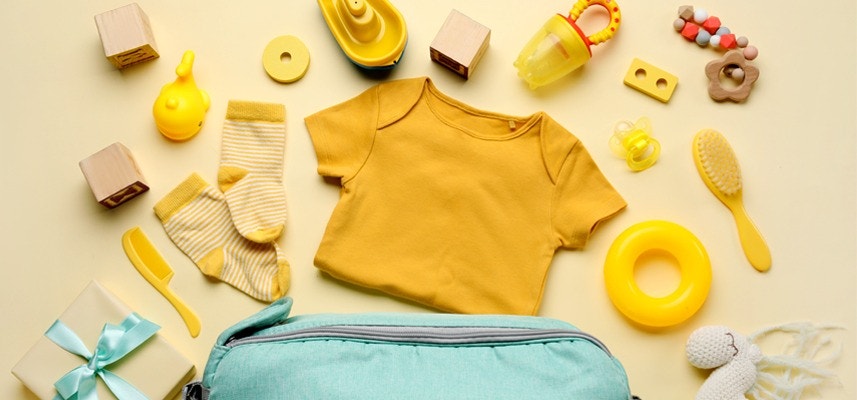Relactation is the process of resuming breastfeeding after one’s milk has dried up. Breast milk usually dries up within 2-3 weeks postpartum if breastfeeding is never initiated. It may take many months to dry up if weaning is done after a prolonged period of baby nursing. The process of relactation can be started weeks to months after stopping breastfeeding. Relactation is achievable for most women, but it requires having a lot of time, patience, good support, and realistic expectations.
Mothers who make the decision to relactate might have the desire to pump and bottle feed, directly breastfeed (also called exclusive breastfeeding, where all infant feedings are solely at the breast) or have an eventual goal of some combination feeding (which is direct breastfeeding and bottle feeding together). It is okay to start the process of relactation without yet being able to envision how your baby will ultimately receive your breast milk.
Why Relactate?
As a result of the recent baby formula shortage, there has been a significant increase in mothers who are interested in relactating to ensure their babies receive enough milk.
Other reasons that mothers may opt to relactate include the following:
- If their baby develops a severe formula intolerance, such as a cow’s milk protein allergy and therefor needs human milk.
- Reunification after a long period of separation from baby (i.e., an extended admission to the neonatal intensive care unit (NICU) or maternal hospital admission).
- Adoption or surrogacy.
- Difficulty accessing clean water to mix with formula (i.e., during a natural disaster or war).
- Having been on a medication or drug that was not compatible with breastfeeding that is no longer needed.
- Leaving outside employment to stay home with baby.
The Relactation Process
Before you start the process of relactation, you need to be sure to have a good support system in place – both at home and in the workplace. It’s best to work with a lactation specialist, such as an IBCLC (international board-certified lactation consultant) or a breastfeeding medicine physician, who has experience guiding mothers through the process of relactation. Many lactation specialists have their own relactation “protocol,” with guidelines that can be tailored to the needs of their clients. I recommend interviewing several lactation specialists ahead of time until you find one who is a good fit for you. Peer relactation and breastfeeding support groups can also be a wonderful way to get support and encouragement through the process.
Our bodies release the two main hormones that are needed for breast milk production, oxytocin and prolactin, in response to nipple stimulation. Thus, relactation requires frequent nipple stimulation. This can be accomplished by putting your baby to your breast(s), breast pumping, hand-expressing, or some combination of all three of these. Having nipple stimulation 8-12 times per day (each 24-hour period) is an important step for stimulating breast milk production.
In most cases, pumping is the key element to getting one’s milk supply back. Pumping for relactation should be done with a high-quality, double electric breast pump which is made for long-term use – not a wearable, battery-powered, “hands-free” pump. Using a pumping bra (to be “hands-free” while double electric pumping) and power pumping (clustering a few pumping sessions together) can make frequent pumping more manageable. Prolactin levels are usually highest in the middle of the night, so it’s recommended that one of your breastfeeding or pumping sessions each 24-hour period takes place overnight. Making sure that both breasts are fully emptied after each pumping session will help to trigger the release of prolactin and oxytocin.
Hand expression can be a helpful tool to remove milk that is left in the breasts after a pumping or breastfeeding session. Hand expression can also be done between pumping sessions. Since it does not require any equipment, it can be done whenever (and wherever) you’d like! Using your fingers to gently massage your breasts as you pump or during nursing sessions can also help to increase milk flow. Even if you plan to exclusively pump, having your baby suckle at the breast can help in regaining your milk supply. It’s not unusual for babies to resist latching on for the first few weeks of relactation. Because of this, I recommend focusing on having lots of mother-baby skin-to-skin contact during the first week or two of relactating, without any latching attempts. “Skin-to-skin” time, which involves holding your baby against your bare chest with him or her wearing just a diaper, is calming for babies and helps them to associate being near their mothers’ breasts with feeling comfort. Some babies, especially younger ones, will sometimes move down and spontaneously “latch on” while skin-to-skin with their mothers.
Once your baby is comfortable at or near the breast, latching attempts should be started slowly, at most a few times per day. At this point in the process, pumping will still be the main way to stimulate milk production. You will need to be sure to continue to pump between breastfeeding sessions.
Babies often do better with latching attempts if they done when they are not frantic from hunger. Offering an ounce of a supplemental feed prior to a latching attempt can help to calm a baby down enough so that they will latch on to your breast. Comfort nursing, non-nutritive suckling between feeds, can also be an excellent way to coax your baby back to the breast. The transition from bottle feeding to direct breastfeeding should be a gradual process to ensure that your baby gets adequate nutrition and does not experience too much stress. It’s important to make sure that babies are getting enough breast milk and gaining weight appropriately while relactating. Infants should have their weight checked regularly during relactation to monitor weight gain – this can easily be done in the home by buying or renting a baby scale. Monitoring urine and stools is also important. Your baby’s pediatrician might suggest having a few extra “check-ins” during relactation as well. Pediatricians are very experienced with monitoring infants’ growth and nutrition.
FAQs About Relactation
-
How long does it take to relactate? The average length of time to relactate is one month, but it can take several months for mothers who have not breastfed for a long time (or ever). Relactation works best if one’s baby is less than 3 months old, and/or if there has been a short interval of time since breastfeeding.
-
Can all women relactate? Most women can relactate if they have adequate support. However, some mothers are never able to regain a full milk supply and may need to continue to supplement their babies with breast milk substitutes for the long haul.
-
Are there any tools that I can use to help with relactation? Galactagogues are medications and herbs that are used to increase milk supply. Commonly used herbal galactagogues include fenugreek, milk thistle, goat’s rue, moringa, ginger, and torbangun. The two main prescription medications used to induce and augment breast milk production are Metoclopramide (Reglan) and Domperidone. These medications can have serious side effects and should only be used under careful guidance of a breastfeeding medicine physician or your healthcare provider. Disclaimer: please keep in mind that galactagogues are not intended to replace frequent pumping and/or breastfeeding sessions – they should only be used in addition to frequent nipple stimulation and breast emptying.
Other tools that can be used to help with relactation are nipple shields and supplemental nursing systems. A supplemental nursing system is a container that contains breast milk (or formula) that is attached to a thin tube. Affixing the end of the tube near the nipple allows babies to get supplemental milk feeds while breastfeeding. Like galactagogues, nipple shields and nursing supplementers should only be used with oversight of your breastfeeding/lactation specialist.
-
Do you have any tips for making relactation successful? The four main factors in relactation success are the age of your baby (babies under 3-months-old are typically easier to get back to the breast), having a short time interval since weaning or stopping breastfeeding, being sure that you have good lactation and social supports in place, and setting realistic expectations for both yourself & your baby. I also recommend focusing on basic self-care during relactation. Stress can interfere with a woman’s ability to produce milk and can ultimately cause a low milk supply, so being able to manage stress is an important factor in relactating. Simple ways to do this include making sure to get enough rest, hydration, outdoor time, and small “breaks” from baby care and feeding to do something you enjoy, such as reading, dancing, walking, art, or listening to music.
Resources:
- Information from CDC: https://www.cdc.gov/breastfeeding/breastfeeding-special-circumstances/supporting-families-with-relactation.html#:~:text=Relactation%20is%20the%20process%20by,time%20(weeks%20or%20months)
- Information from UNICEF: https://www.unicef.org.uk/babyfriendly/wp-content/uploads/sites/2/2020/03/Unicef-UK-Baby-Friendly-Initiative-Maximising-breastmilk-and-re-lactation-guidance-2.pdf
- Information from American Academy of Pediatrics (AAP): https://www.healthychildren.org/English/ages-stages/baby/breastfeeding/Pages/Relactation.aspx











